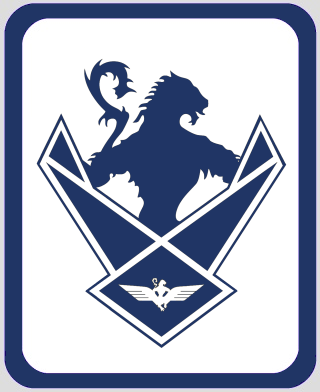The strange death of emulation
The PSP? Hwurgh! What is it good for?
Absolutely some things! Say it again!
WoSblog has been a little harsh on the PSP lately, and quite justifiably so. But if for no other reason than plugging gamely on in the face of overwhelming odds (and actually there are other reasons), Sony’s not-so-little handheld deserves a bit of credit.
Not that Sony themselves do – almost all of the PSP’s problems are of the hapless multinational’s own making, and almost everything that’s good about the machine is despite Sony, not because of them. But nonetheless, the chunky heavyweight of the portable-console world has some unique strengths which ought to be celebrated by someone, somewhere before it finally collapses for good under the remorseless two-front assaults of the DS and the iPod, and since nobody else seems to be volunteering it looks like it’s WoSblog’s job.
For some reason, the world of emulation appears to be in a coma. Apart from the valiant efforts of MAMEDEV to remove more and more functions from the arcade emu until it’s finally completely unusable for playing games, hardly anyone seems to be developing emulators any more. Back in the early 2000s when I was writing Emulation Zone for PC Zone magazine, there was either a brand-new emulator or significant advances in an existing one to write about every month. But since Emu Zone ended, activity in the emulation field seems to have all but dropped dead.
Despite the job being far from done, and with numerous formats still in need of stable, fully-functioning emulators, almost everyone seemed to lose interest overnight. With the exception of the horrible-but-worthy MESS – which makes progress at the speed of a glacier in a rush-hour traffic jam – and some incremental steps with regard to the DS, I can’t even remember the last serious launch or update of an emulator.
Significant platforms like the 3DO, CD-i, the Nuon, the Tiger Game.Com and the Virtual Boy and more still lie almost entirely in the sweaty, jealous hands of the collector market (in so far as playing their games properly goes), leaving noteworthy games like Hotel Mario, Tempest 3000, Freefall 3050, the Philips Zelda tites and VB Wario Land all but lost to history.
The world of mobile phone gaming, which (particularly in Japan) has seen an absolute explosion in creativity, including in some of gaming’s biggest and best-known franchises, is also bafflingly inaccessible, given that it’s based around the highly PC-friendly Java standard. Huge numbers of mobile-phone games are effectively impossible to come by legally, due to the insanely fragmented nature of the distribution model and hardware-compatibility issues, yet insanely nobody seems to have come up with a means of selling the games to PC owners to play on laptops and netbooks, which would be absurdly easy technically and also be ideally suited – with the games’ low demands on CPU power and battery life – to such devices.
Curiously, the machine which has stepped in to fill a few of these holes in emulation is the PSP. It’s already the best way by far to play games from several other handheld systems, eclipsing both PC emulation and native hardware. SNK’s short-lived Game Boy Color competitor the Neo Geo Pocket hosted a sunstantial range of accomplished and interesting games – not least two unusual spinoffs in the Metal Slug series, one of the most beloved Sonic The Hedgehog games, fascinating action-puzzle hybrid Puzzle Link 2 and WoSblog personal weakness Crush Roller, but you’d need the night-vision of a cat to pick them out from the handheld’s murky non-backlit screen.
With the superb RACE! PSP emulator, though, not only do you get emulation that in itself is far superior to any of the PC emus, but you can enjoy these games on the move – the purpose they were designed for – and with the benefit of the PSP’s huge brightly-lit display plus the added advantages of save states, the awesome Time Rewind feature and extra control buttons.
(The Slug games suffered especially from being crammed onto a format that just didn’t have enough of them, and thereby being reduced to using the Start button for important in-game functions like toggling guns and grenades. Being able to define a PSP face button for that purpose instantly makes the game a lot more fun to play.)
The PSP’s twin control inputs (d-pad and analogue stick) also make it a natural home for emulation of Bandai’s Wonderswan and Wonderswan Color handhelds. Never released outside of Japan, and also hampered by the absence of backlighting, these odd-but-capable little machines ran some of the most obscure entries in popular and successful gaming bloodlines like Rainbow Islands and Ghosts’n’Goblins, as well as oddities like the Tekken Card Game and a much-lauded (slightly mystifyingly, to this reporter) version of Tetris.
Conveniently, then, the sadly now-dormant multi-system [e]mulator pretty much nailed WS/WSC emulation before it disappeared, alongside superb emulation of the PC Engine, Game Boy, Game Gear, NES and others, again supported by full control customisation and save states (it offers a generous 10 save slots for every individual game).
The PSP is also a brilliant way to play old Playstation 1 games. The small screen makes the graphics look wonderful, the controls are obviously a natural fit, there’s no danger of running out of memory card space and you can fit scores and scores onto a single Memory Stick. Sony’s failure to make no more than a dismally-poor 55 PS1 games legally available to buy for the PSP (the Japanese get close to 400) is one of the most inexplicable of all its countless idiotic mistakes in the current generation, but fortunately with custom firmware installed you can bypass their stupidity and fairly easily rip your own PS1 discs to the PSP.
Obviously, in all these cases emulation also frees you from having to carry around bulky pocketfuls of carts or CDs. But perhaps the PSP’s most admirable emulation function is found in PSPKVM. This absolutely tremendous little piece of code does a remarkable job of running a huge variety of mobile-phone games, across all sorts of platforms and screen sizes, on the Sony machine’s giant display.
Simply laying your hands on the .JAR file and then auto-installing it via the emulator’s interface gives you a vast array of possible mobile formats and resolutions to play it on, and when you find the right one it remembers the settings. Saving is handled automatically and controls can be customised, which frequently transforms the experience of playing mobile games which had to be squeezed awkwardly onto a tiny numeric keypad into something that’s more enjoyable by orders of magnitude.
So many mobile games which Western gamers effectively never had a chance of seeing legally have now been set free to take their rightful places in gaming history, and been improved as games at the same time by a big screen and better controls. Emulation has always had this power (proper saving in place of tiresome passwords, control customisation, speed-ups and the elimination of the hell of cassette multiloads are just a few of the enhancements emulation has delivered to retrogaming fans), but PSPKVM has probably brought more games back from the edge of extinction than any other single emulator, and for that we must salute both it and the PSP.
The DS doesn’t have the raw power, the iPod doesn’t have the controls, and the GP32X doesn’t have the accessibility. The PSP, however, is the unlikely guardian of the entire history of handheld gaming. Naturally, this makes Sony furious with rage, and if you want a PSP to perform these functions you’ll have to be careful not to buy one of the ones that Sony has removed this capability from (so avoid the PSP3000 and the PSP Go, as if you needed telling that second part).
It’s a tragedy (and a surprise) that emulation as a whole should have come to such a poor state. Perhaps the games industry’s relentless greed-driven attempts to crush it have finally convinced emulator authors that it’s just not worth the trouble any more. But in the meantime, use your PSP to celebrate what it can achieve, and what it could achieve. After all, it’s not like there are any PSP games to buy for it.

























After having long term borrowed a PSP from a friend for a while, I agree.
If I can get a 2000 for cheap at some point, I probably will. I'd actually probably prefer a Go, but only if the firmware ever did get hacked, since (despite not actually own a console) there are a bunch of games I own. Also the PSN prices for games are a hell of a lot more than the price you can get the same UMD games for.
Always struck me as odd that there never was an Emulator to play Mobile games on your PC. Something like Mame, but without the obvious drawbacks, that cover the range of phone games.
It's utterly perplexing to me. How hard can it be?
There is a sort-of one, the basic but useful MIDP2EXE, but it only seems to be any use for stuff at 176×208 resolution, which is quite old now.
It's the only thing I use my PSP for, indeed I fear upgrading the CFM in case it buggers my NeoGeo emulator which works pretty much perfectly. I agree it is also the perfect platform for the PS1 and I even occasionally use the magnificent Remote Play feature for this purpose. Still it always often feels like you're fighting Sony to get the best out of the machine.
A couple of years ago you could get all the phone emulators straight from the manufacturer for nowt – just sign up as a developer (warning! requirement: ability to state you are a developer).
I've got piles of simulated Nokias cluttering up my hard drive, somewhere.